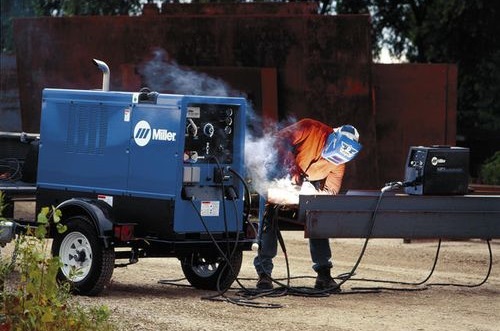People involved in the welding business believe that welding is all about achieving deep penetration into the base plate in order to ensure a strong weld. If the penetration is shallow, the weld will be weaker. This means that deep weld penetration is required. But do you think these statements are true? Let’s find out.
Immediately and straightforward – these statements are not true. The weld strength does not depend on the weld penetration only, there are other factors that need to be considered depending on the type of weld and welding machine. The welding process has been used extensively for joining two steel pieces (one of which the base plate) together by heating them to a point of melting. This process is quite complex, and there are many types welder generator models and welding equipment. To keep the article simple and to understand the welding process better, we will discuss about the arc welding, types of welding joints and types of welds.

Arc welding is a very popular method of joining two separate metal pieces into one homogeneous piece. This procedure is preformed by using a standard welder or a welder generator. With arc welding, you can achieve coalescence, also known as fusion. Weld fusion can be defined as melting a base metal (plate) and a filler metal to achieve coalescence. But in order to achieve a successful fusion, the molecules of both metal pieces need to be clean and close one to another.
The properly termed depth of fusion, or more commonly known as penetration, is the distance the fusion extends into the base plate during the welding process. A single cross section shows the depth and width of the penetration. For proper weld strength, all welding machines, including the welder generator, require the fusion to take place between the two metal pieces, but not all joints require a deep penetration or large depth of fusion. When fusion between the filler metal and the base plate is achieved, the two pieces can be joined together successfully.
A welding joint is the point where usually two metal pieces are rigidly joined together. There are five known types of welding joints: edge joints, butt joints, corner joints, tee joints and lap joints. The butt joints are the most common, formed when two plates are connected together to create a strong connection. The edges of base plates are previously prepared in order the weld to penetrate deeper into the butt joint. Another popular welding joint, usually preferred by the welder generator users, is the lap joint. This joint is created when two metal pieces with flat surfaces overlap each other.
Although there are many welding machines, most people are familiar only with two models: groove and fillet welds. The groove weld is mainly used where filling a gap between two metal pieces is required. The fillet weld is used for joining two pieces together at a specific angle.
























